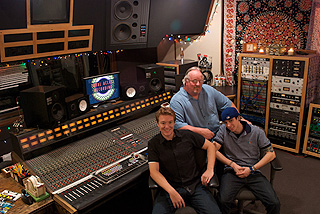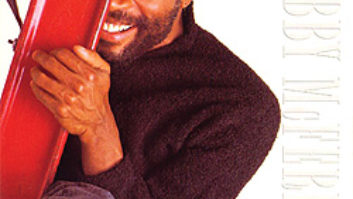
KUDOS FOR TOTAL ACCESS RECORDING
I just wanted to say that I have been recording at Total Access Recording [profiled in the May 2010 issue “Sessions” section] with Wyn Davis for 20 years, and it is one of the great rooms in the Los Angeles area. The entire staff and facility is of the highest quality I have ever worked with. The sound of my drums coming out of there is equal to none. Wyn Davis has the ears that every artist wants and needs. Our band, Native Son, has just completed our debut CD, which was recorded at Total Access. Another nice perk is that it is right off the ocean in Redondo Beach, Calif. It doesn’t get any better than Total Access Recording!
—
John “JR” Robinson
NOW HEAR THIS
I enjoyed “Tech’s Files: Do You Hear What I Hear” in the April edition of Mix. It brought to mind how radio and sound reproduction have changed over my lifetime. It doesn’t matter much to me anymore because of the many years I spent listening to music in the upper decibels, which has left me with almost no ability to hear at all. That is something young engineers should give a lot of thought to, but they don’t.
I grew up in the ’30s and we listened to the radio, which had a 4-inch speaker cone activated by something that looked like the magnets and coils of an earphone; there was no bass there at all, but it was, however, very intelligible. As years went by, we graduated to a 5-inch speaker with a voice coil and the sound became better. Much larger speakers were made with field coils to make an electro-magnet, with enormous windings powered by a few hundred volts. They were an improvement. Then somewhere along the way, the TRF [Tuned Radio Frequency] receiver changed to the Superheterodyne [circuit].
Field coils were replaced with Alnico permanent magnets, and companies like Zenith Radio put 12-inch speakers in its floor models that pushed bass [frequencies] and we headed toward hi-fi. Soon, audiophiles discovered Edwin Armstrong’s FM with no noise and a bandwidth out to 20k. David Sarnoff [president of RCA/NBC] wouldn’t buy it because he had too much invested in Armstrong’s earlier invention of the Superheterodyne. Armstrong then jumped off of the RCA building to his death, never to see his beloved FM become a reality. Then came World War II and all progress stopped until the late ’40s. Amplifiers and speakers improved. The general public became aware of better sound: The LP with its micro-groove and stereo [capability], and the 45 [rpm vinyl record] adding a higher speed for better quality still.
We were jumping ahead fast and then something happened—the transistor radio—and we were back to the early ’30s with tiny, tinny speakers. And even worse, we stuck speakers in our ears, like the miserable hearing aids I wear. Then came the CD with sampling rates that were too low to make even their synthetic sound equal to analog. Want more? How about MP3? Welcome to the 21st century.
I’m not going to jump off any buildings, but I am glad I’m not in the recording studio business anymore.
—
David S. Gold
Gold Star Recording Studios
“Tech’s Files” author Eddie Ciletti notes: “TRF was patented by Ernst Alexanderson in 1916 and was made obsolete by the mid-’30s once vacuum technology had advanced enough to make Superheterodyne practical. Superheterodyne was invented during World War I by Edwin Armstrong, who also invented FM.”
SONGWRITING SCHOOL
Thank you for Gary Eskow’s compelling piece on the recording of Stephen Bishop’s “On and On” [“Classic Tracks,” April 2010 issue]. The article details Stephen’s time in a pair of songwriting classes at The Songwriting School of Los Angeles, which opened its doors in 2009. In the piece, the school is incorrectly named “The Songwriting Institute of Los Angeles.”
The Songwriting School of Los Angeles is devoted to the artistry and industry of songwriting. We have a professional recording studio on-site, with a Steinway B grand piano in the live room. We feel especially humbled and grateful that writers of Stephen Bishop’s caliber and character have spent time and energy toiling at their art with us.
—
Rob Seals
The Songwriting School of Los Angeles
CRITICAL LISTENING, PLUS MASTERING
I was tempted to respond to that “eye-opening” editorial (“From the Editor: The Misunderstood Part of the Record Process,” December 2009). I don’t see anyone explaining why mastering engineers can hear so well. It’s not in the equipment they use; it’s in their training, preparation and knowledge of how to listen critically! This means listening intently with an empirical ear and coming to logical conclusions.
When it comes to macro-dynamics, atmosphere, finer details, soundstage depth, natural ambience and proper presentation of musical dynamics, the mastering engineer can show his/her broad musical background, deep scientific knowledge about physical processes, technical expertise and overall artistic taste.
Mastering at home? Then why not perform brain surgery at home? Many specialized schools and universities offer courses on critical listening (and some exist online). I believe that D.I.Y. home studio owners would greatly benefit.
I can’t stop wondering why so many fellow musicians feel ashamed to seek a professional service and keep denying such obvious necessities.
—
Borislav Dimitrov (aka Boro)
HiZ Productions






